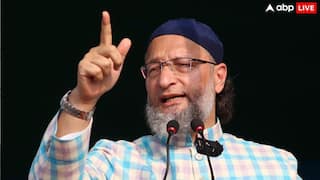Chandrayaan-3 Landing Highlights: What Chandrayaan-3's Vikram Lander And Pragyan Rover Will Do On The Moon
Chandrayaan 3 Moon Landing Live: Chandrayaan-3 successfully landed on the Moon on August 23, 2023, at 6:04 pm IST, making India the first country to softly land a spacecraft on the Moon’s south pole.

Background
Chandrayaan 3 Landing Live Updates: Chandrayaan-3, India’s third lunar exploration mission, is set to land on the lunar south pole on August 23, 2023, at 6:04 pm IST, making India the first country to softly land a spacecraft on the Moon’s south pole. The entire country is full of “energy and excitement” because Chandrayaan-3’s landing will be a historic touchdown. The Indian Space Research Organisation (ISRO) made several changes to the Vikram lander in order to avoid the mistakes that occurred during the landing of Chandrayaan-2.
Chandrayaan-3 is almost identical to Chandrayaan-2, except that Chandrayaan-2 included an orbiter, but Chandrayaan-3 is not carrying an orbiter.
Chandrayaan-3 Landing Live: How Chandrayaan-3 Is Different From Chandrayaan-2
To ensure the success of Chandrayaan-3, ISRO has implemented a series of design and capability changes in the Vikram lander, aiming for strategic enhancements that increase the likelihood of a successful landing on the Moon's south pole. These modifications to Vikram's design are geared towards achieving a safe lunar landing. Key adjustments involve reinforcing the landing legs, enhancing sensors, optimizing the solar array, upgrading software capabilities, refining engine throttling, and fine-tuning engine configuration.
In contrast to Chandrayaan-2's Vikram, which was equipped with five 800 Newton engines, the Vikram lander of Chandrayaan-3 features four throttleable engines. ISRO has integrated a Laser Doppler Velocimeter for precision in guiding the autonomous landing manoeuvre. Additionally, the landing legs have been bolstered for increased strength, and a redundancy mechanism has been introduced to ensure autonomous landing even in the event of complete sensor and engine failure.
A throttleable engine offers the advantage of adjustable thrust. The incorporation of redundancy means that supplementary components, which may not serve a functional purpose, have been included to safeguard an autonomous landing should sensors and engines experience failure. The Laser Doppler Velocimeter is a specialized sensor integrated into the lander. It functions by gauging the frequency of light scattered by minuscule particles in a fluid to measure instantaneous fluid velocities. For Vikram, this sensor will determine the velocity of the lunar atmosphere.
The sensors onboard Chandrayaan-3's Vikram have been upgraded to be more advanced and responsive compared to those on Chandrayaan-2's lander. This enhancement equips the lander to make quicker and more informed decisions during the crucial landing phase.
Chandrayaan-3 Landing Live: When And How To Watch Online
For those eager to witness the event, ISRO will commence the live-streaming coverage of Chandrayaan-3's landing at 5:20 pm IST on August 23. Interested individuals can catch the live stream on ISRO's official YouTube channel, the agency's official website, its official Facebook account, or on DD National.
Chandrayaan-3 Landing HIGHLIGHTS: ‘It Was A Picture-Perfect Landing’, Says INSPACe Chairman
Pawan K Goenka, the chairman of the Indian National Space Promotion and Authorisation Centre (INSPACe) on Thursday called Chandrayaan-3’s successful soft landing on the lunar south pole a “picture-perfect landing”.
#WATCH | Bengaluru: On the successful soft landing of Chandrayaan-3, Chairman of INSPACe, Pawan K Goenka, says, "...There was a lot of apprehension and anxiety before the event because we had Chandrayaan-2 which just fell short of landing on the Moon...It was a picture-perfect… pic.twitter.com/WOdUP8JaI6
— ANI (@ANI) August 24, 2023
Former ISRO Chairman G Madhavan Nair On Chandrayaan-3 Mission
Speaking on the Chandrayaan-3 mission and its successful soft landing on the South Pole region of the Moon, former ISRO Chairman G Madhavan Nair said, “The Pragyan rover has moved out and it is capable of travelling around the landing site to collect various data which will be useful for the scientific community.”





































